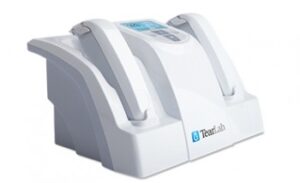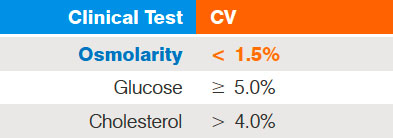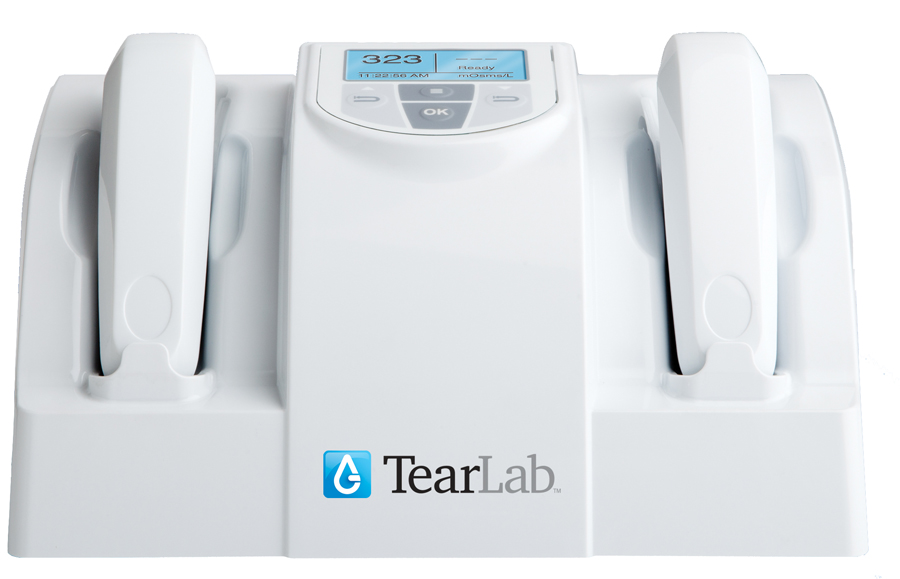TearLab

TearLab Osmolarity System
The TearLab Osmolarity System* is intended to measure the osmolarity of human tears to aid in the diagnosis of dry eye disease in patients suspected of having dry eye disease, in conjunction with other methods of clinical evaluation.
*TearLab is for professional in vitro diagnostic use only.
OSMOLARITY: WHAT THE NUMBERS REVEAL
TearLab adds data to a doctor’s insight by guiding the diagnosis and management of the ocular surface.
Abnormal Osmolarity is defined by:
- An elevated reading, >300 mOsm/L, indicating loss of homeostasis.
- When the inter-eye difference is >8 mOsm/L, indicating instability of the tear film

Osmolarity is an important biomarker of ocular surface health.


HOW IT WORKS
The TearLab Osmolarity Test Card, in conjunction with the TearLab Osmolarity System, provides a quick and simple method for determining tear osmolarity using nanoliter (nL) volumes of tear fluid collected directly from the eyelid margin. The Test Card is held by the Osmolarity Test Pen, for safe collection.
The TearLab Osmolarity Test utilizes a temperature-corrected impedance measurement to provide an indirect assessment of osmolarity. After applying a lot-specific calibration curve, osmolarity is calculated and displayed as a quantitative numerical value.

Two identical, blue reusable Electronic Check Cards are provided as a procedural quality control to confirm the function and calibration of the TearLab Osmolarity System within manufacturer specifications.

TearLab Osmolarity Control Solution is a quality control material used for verifying the quantitative performance of TearLab Osmolarity Test Cards when used with the TearLab Osmolarity System.
PRECISE AND PREDICTIVE RESULTS AT THE POINT-OF-CARE
Precise:
More precise than other universally accepted point-of-care tests such as cholesterol and glucose

TEARLAB IS PREDICTIVE
- TearLab has a positive predictive value of 89%.
- Positive predictive value is the probability that subjects with a positive test truly have the disease.

VARIABILITY IS THE HALLMARK OF DISEASE

Request for more information
Feel free to request for a call back if you are interested in any of our listed products. Our friendly advisers are more than happy to answer any queries that you may have!
